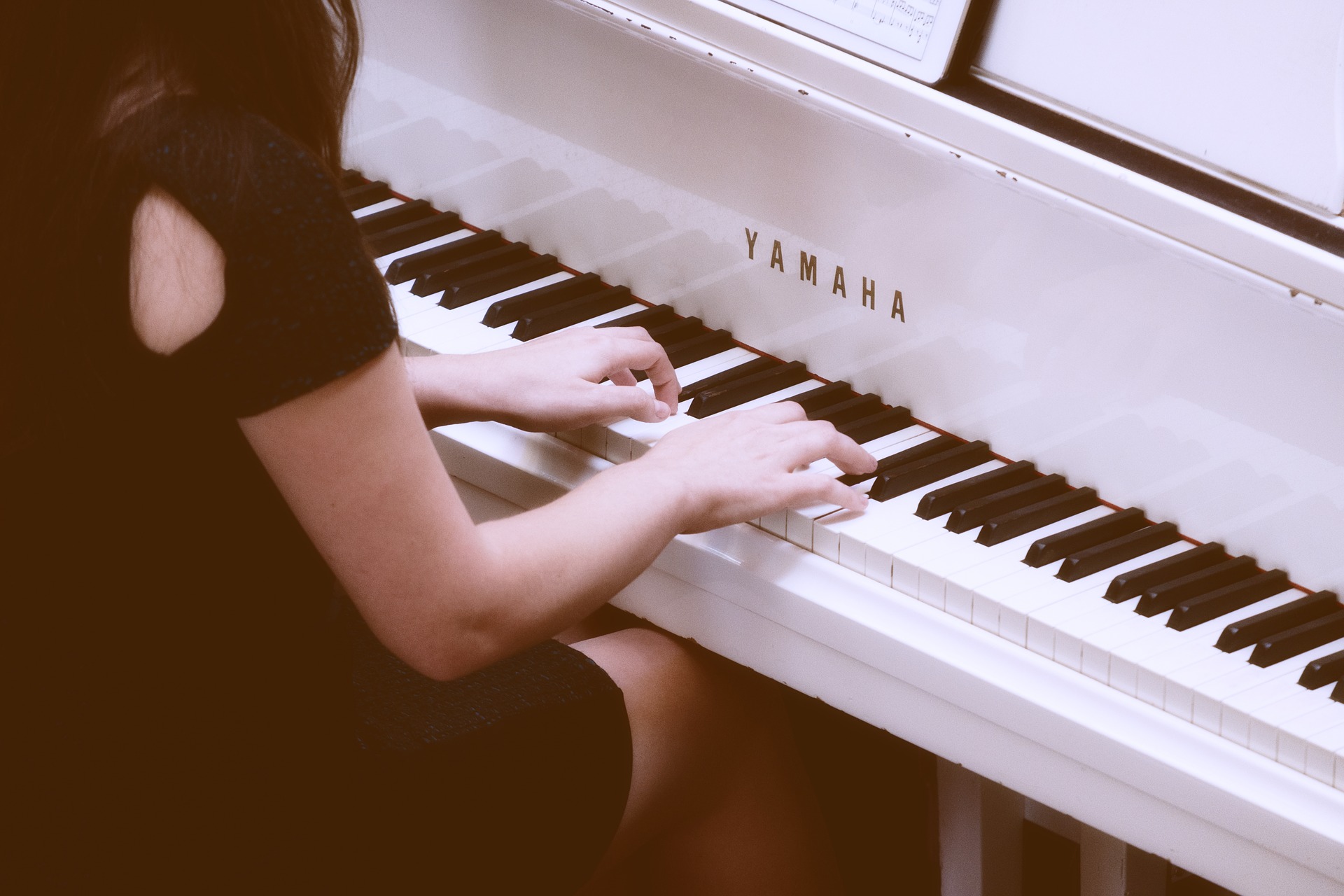Written by Michele Wheat

Playing the piano is an enjoyable activity that engages your brain, body, and emotions as you learn to express yourself through music. Piano playing requires development of psychomotor skills involving the hands, wrists, arms, and shoulders. Therefore, it is important to understand and apply proper technique as you learn and practice at the piano.
First, ensure that your piano bench is at the correct height to allow proper positioning of the shoulders, arms, wrists, and hands. Sit at the piano with your spine erect but relaxed, and place your hands on the keys. Your arms should hang down in a relaxed manner from your shoulders. Elbows should be slightly higher than the keyboard and hanging at a natural distance from the sides of your body. If your shoulders are hunched or elbows tight to your sides, it will be necessary to adjust your seat height and distance from the keyboard. When your seat is positioned at the proper height and distance, you will notice a naturally relaxed alignment from your shoulders through your arms and wrists to your hands and fingers as they rest on the keys.
Once you have adjusted your piano bench correctly, you will want to turn your attention to the positioning of your forearms, wrists, and hands. Start with the cupped position of the hands and curved shape of the fingers. To find this position, let your hands drop and rest comfortably in your lap. Notice that when your hands are resting in a completely relaxed pose, the fingers assume a curved shape. Maintaining that curve, lift your hands from your lap and place the tips of your fingers on the piano keys. Without tension, cup your hands as if you were curving them around a softball or an orange. For children, you might want to use the image of cupping the hands around an egg or a golf ball. The cupped hand position with curved fingers will allow you to develop finger dexterity and control as you practice.
Next, consider how your wrist is a natural extension of your hand, leading into your forearm. The wrist is an important body part when playing the piano, as it maintains a balance of looseness and flexibility while providing support for your hand and fingers. As you play, keep your wrists level with your hands and higher than the level of the piano keys. Beginners frequently err by allowing their wrists to sag, dropping them down below the level of the keyboard. This creates a bend in the wrist that is undesirable because it prevents the hand and fingers from moving with required dexterity. In keeping the wrist level with the hand, try to balance a pencil that is lying atop your hand and wrist. Of course, you would not really balance a pencil on your wrist as you play because your hands and wrists will naturally move up and down as well as laterally. But momentarily balancing a pencil along the top of your hand, wrist, and forearm will give you the idea of how these body parts should be level and aligned.
As you develop your piano playing technique, be sure to guard against excessive tension in the shoulders, arms, wrists, and hands. Strive for active, dynamic movement while maintaining a degree of looseness and relaxation. Play from your shoulders, feeling energy flow from the shoulders down through your arms and wrists into your hands and fingers. Don't try to play just from your wrists. The wrist is most susceptible to becoming overly tense while playing the piano, and excessive tension can lead to a repetitive motion injury such as tendinitis or carpal tunnel syndrome. These conditions most often occur among advanced or professional musicians who spend many hours practicing at the piano. If you begin to feel tightness, pain, numbness, or tingling in the wrists, forearms, and shoulders while practicing, take preventive measures to reduce tension. Get up from the piano, move around, and stretch. Loosen and stretch your neck, shoulders, arms, and hands. Practice regularly in shorter sessions rather than trying to power through an hours-long, marathon practice session. Apply ice if you develop pain in your wrists or forearms.
With proper positioning of the hands, wrists, arms, and shoulders, you should be able to develop functional piano playing technique. This will allow you to enjoy many years of musical pleasure at the keyboard. The following resources address proper positioning of the hands, wrists, and arms for piano playing as well as advice to avoid repetitive motion injury.